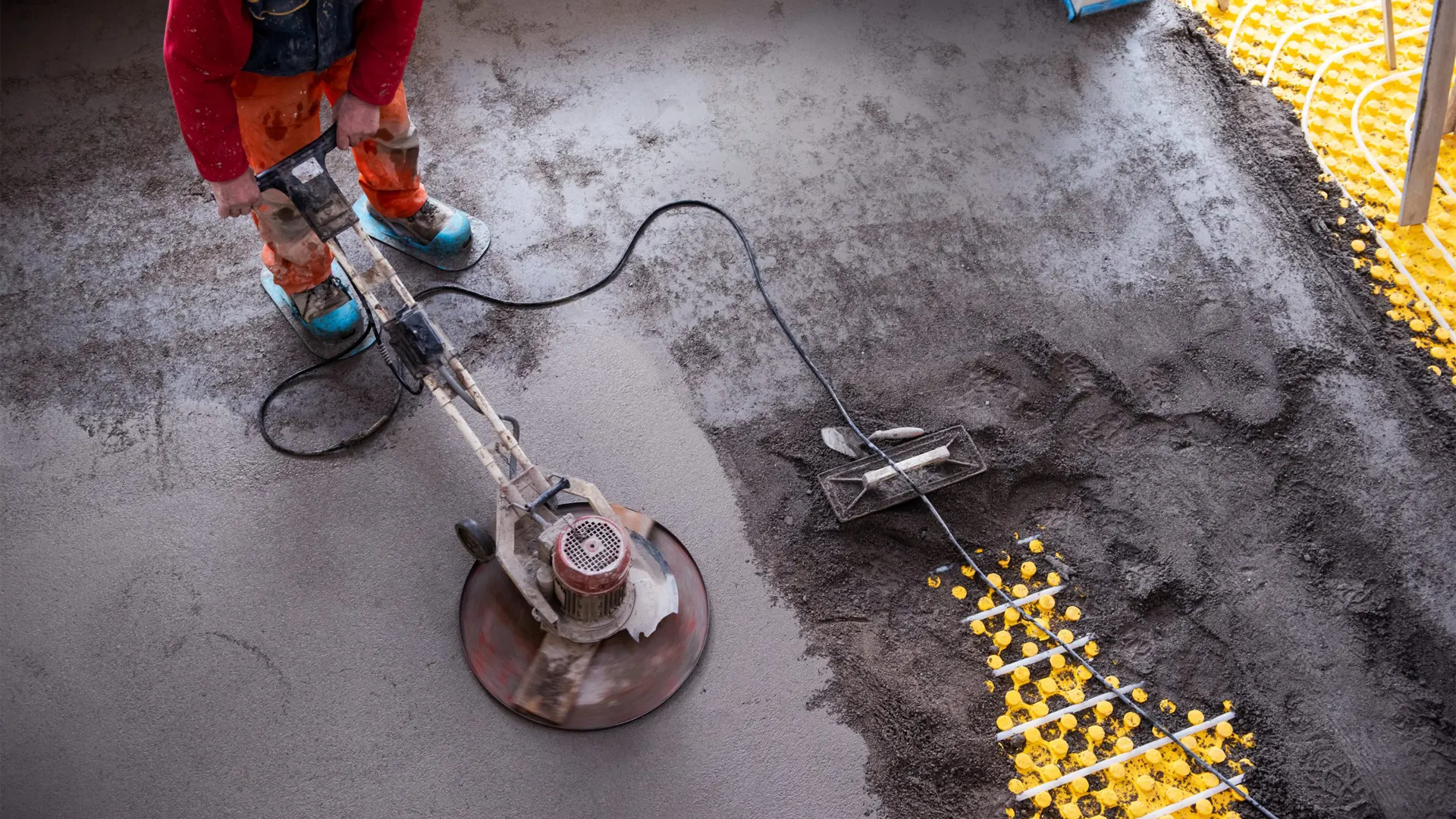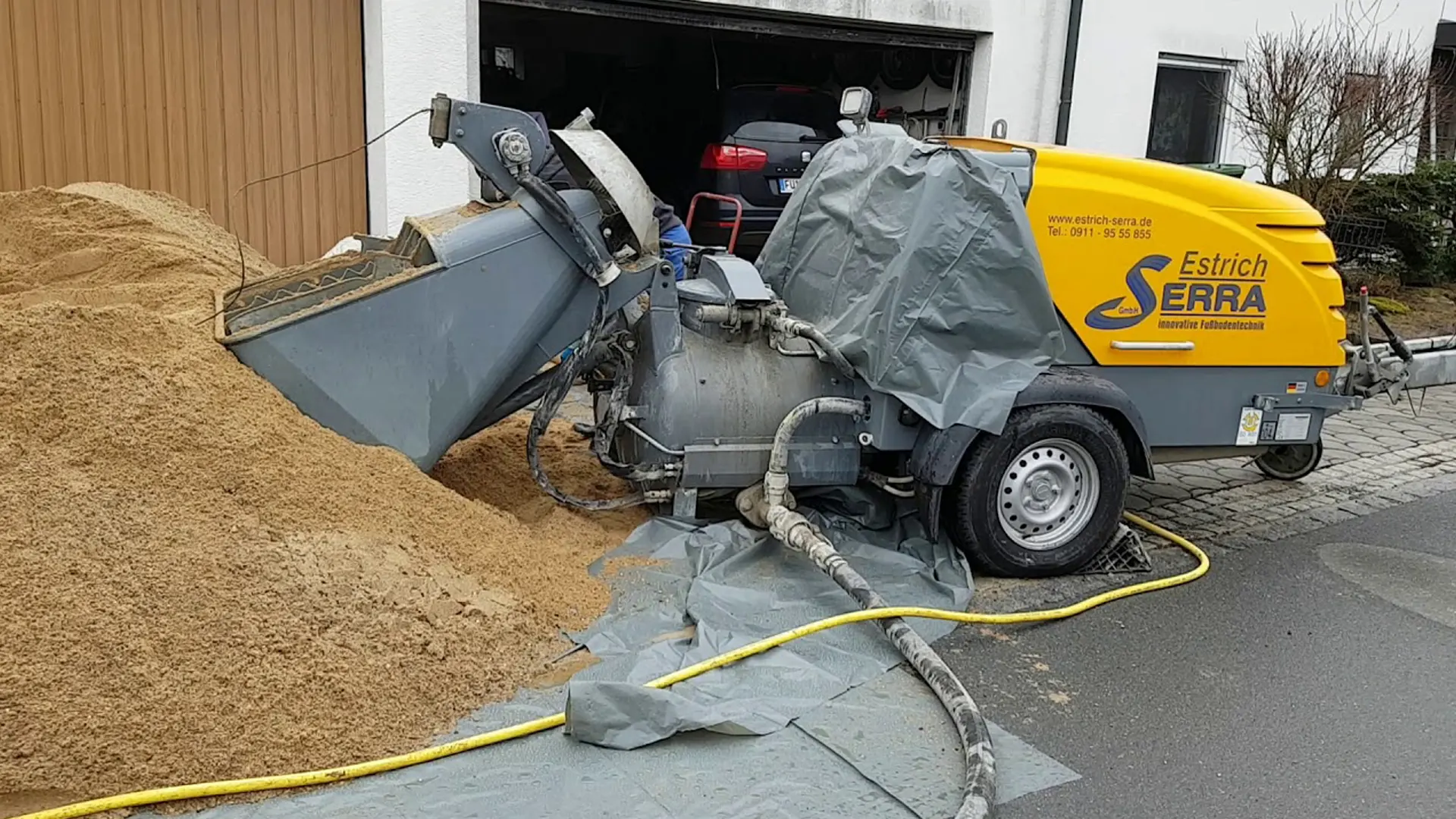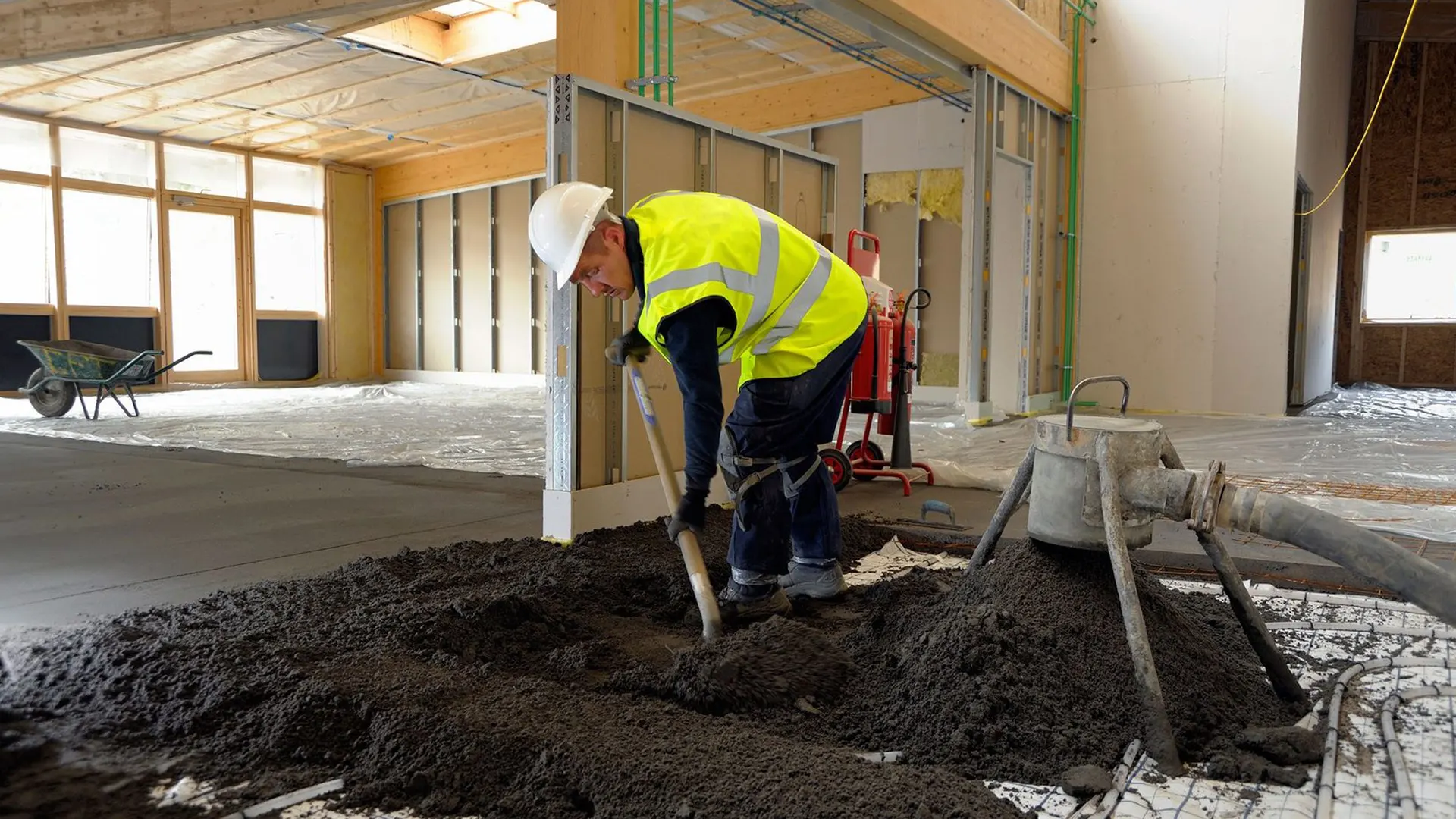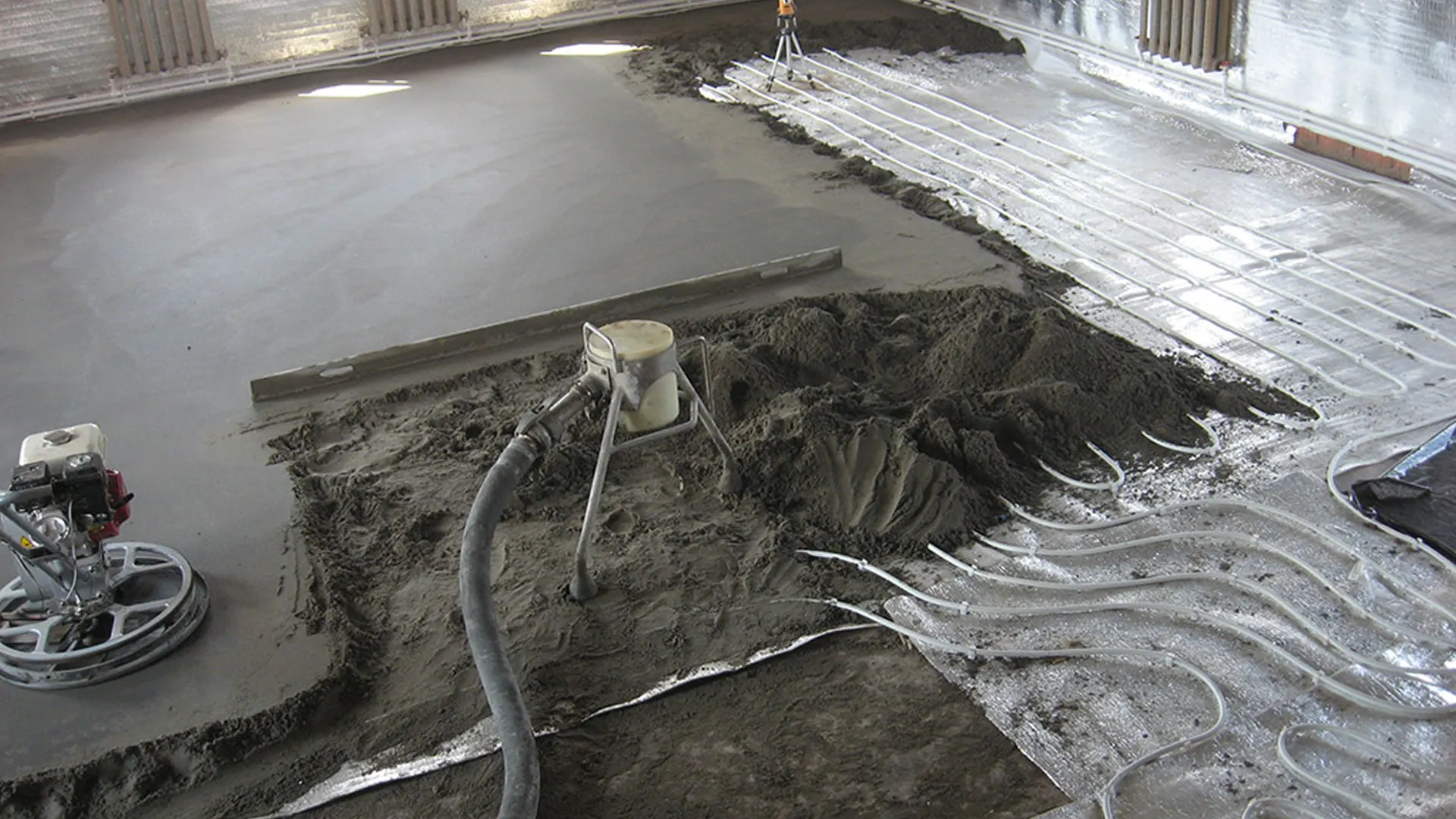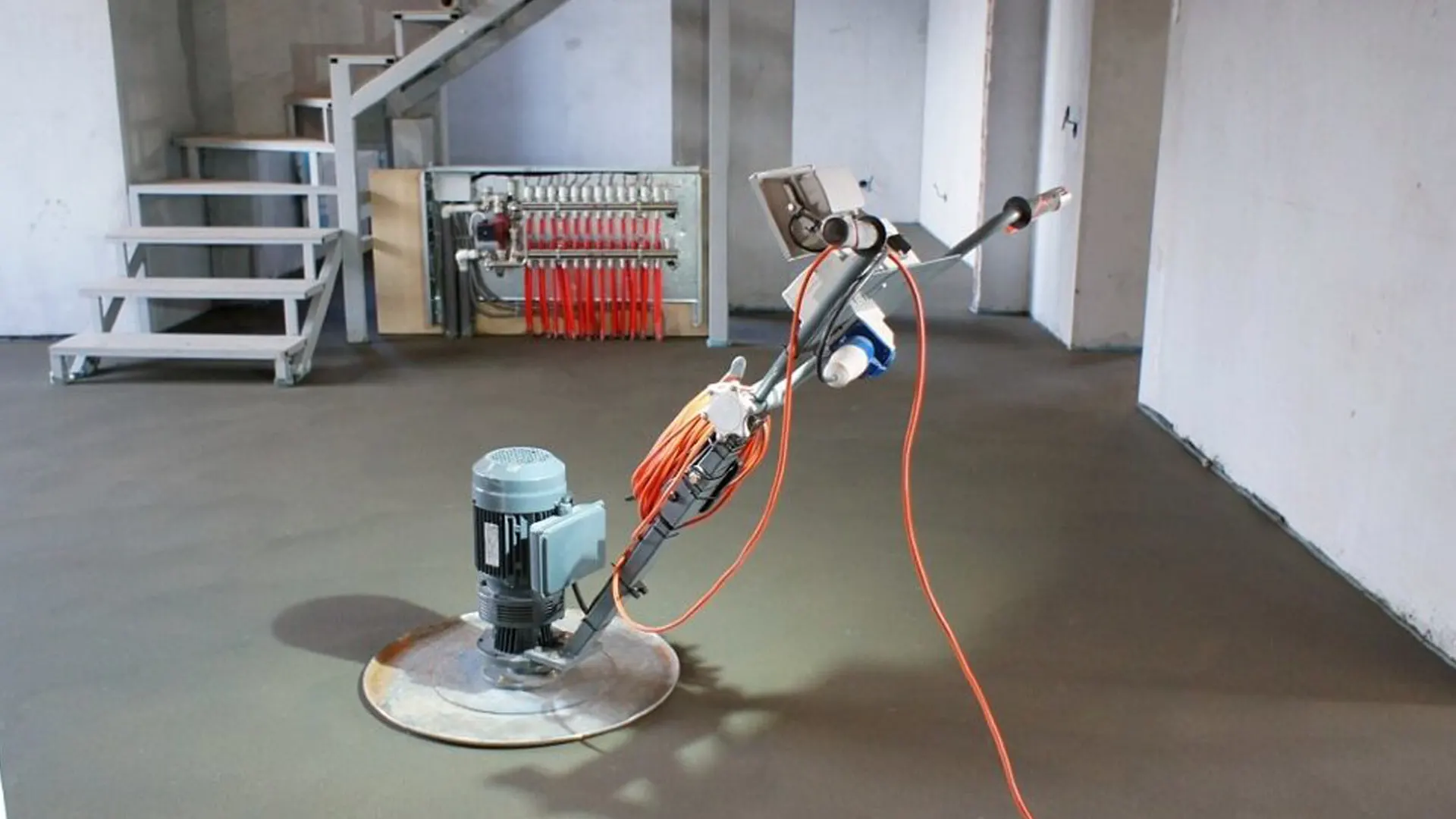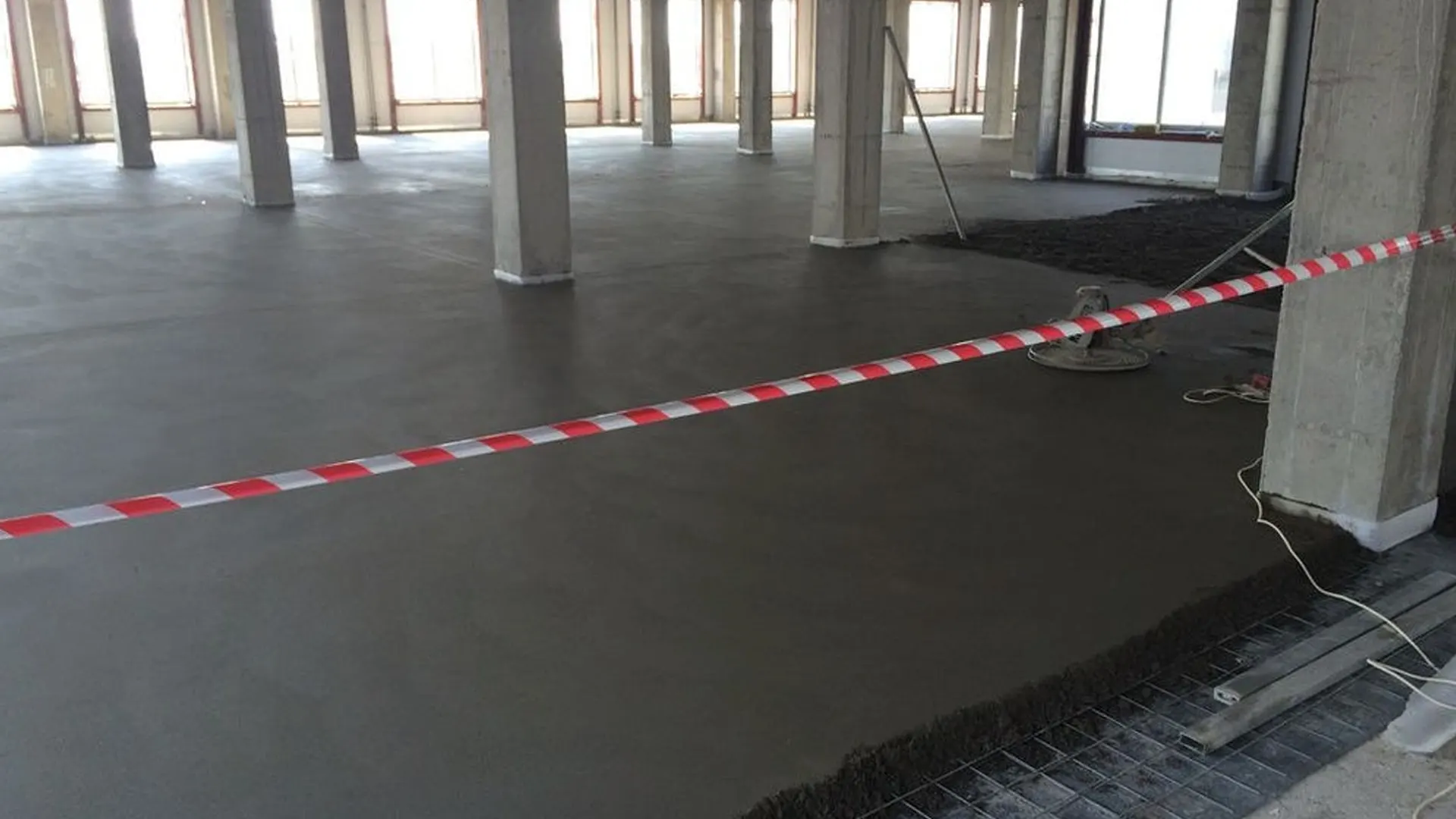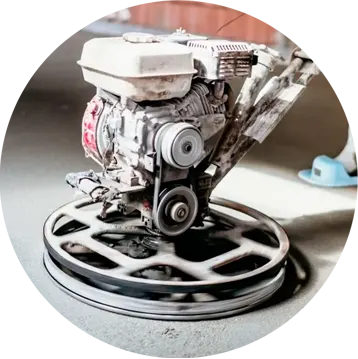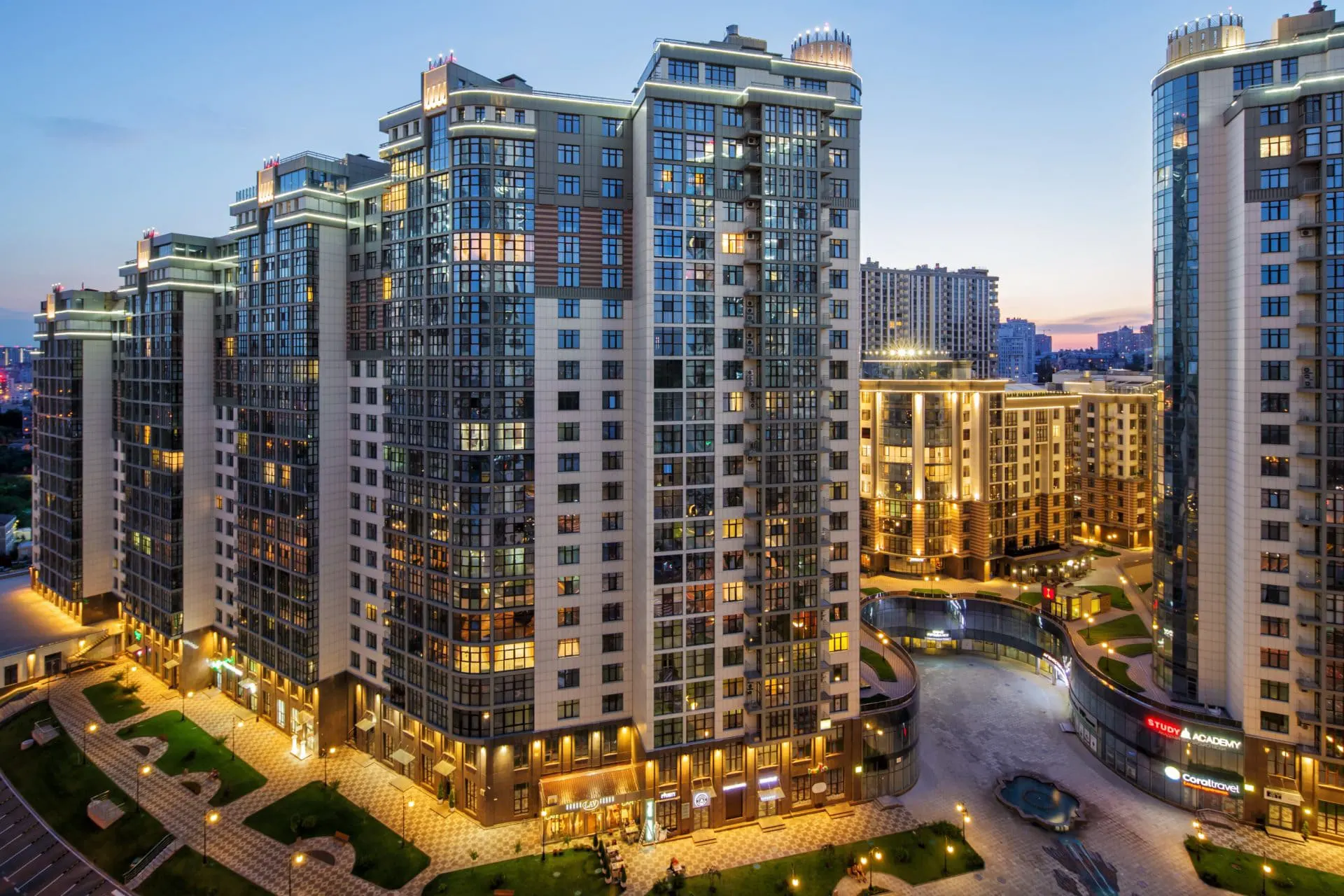Mechanized Semi-Dry Floor Screed: Innovations in Construction
In the world of construction technologies, innovations are emerging that significantly improve processes and results. One of the most advanced methods of floor screed is mechanized semi-dry screed, which combines efficiency, quality and reduced work time.
Principle Of Mechanized Semi-Dry Floor Screed
This method is based on the use of specialized mechanisms designed to accurately distribute the construction composition on the prepared surface. This ensures a uniform coating and minimizes the possibility of defects.
Advantages Of Mechanized Semi-Dry Floor Screed:
- Speed and Efficiency:
- The mechanized process significantly speeds up the execution of work compared to traditional methods, which is especially important in construction conditions with limited deadlines.
- Surface Quality:
- The machines ensure high precision and smoothness of the coating, which is a key factor for successful installation of various floor coverings.
- Save Resources:
- Mechanized semi-dry screed requires less water, which not only saves resources, but also speeds up the drying process.
- Solid Foundations:
- Modern compositions provide high strength and resistance to mechanical influences, creating long-lasting substrates.
- Automated Quality Control:
- Many systems are equipped with sensors and automatic control systems, eliminating the human factor and guaranteeing high quality of work.
Technological Process Of Mechanized Semi-Dry Screed:
- Preparation Of The Base:
- Cleaning the surface of dust and debris, repairing damaged areas.
- Setting Limiters:
- Installation of special limiters that determine the height of the future screed.
- Preparation Of The Mixture:
- Preparation of construction equipment using modern technologies and high-quality components.
- Applying The Mixture:
- Automated machines precisely and evenly distribute the mixture over the surface.
- Manual Correction:
- Manual correction is performed in areas that require additional care.
- Quality Control:
- Control of layer thickness, absence of defects and compliance with requirements.
- Drying out:
- After the work is completed, the screed is left to dry, creating a strong and even coating.
Application Of Mechanized Semi-Dry Screed:
This method is widely used in the construction of residential, commercial and industrial facilities. It is ideal for creating a base before laying various floor coverings, such as ceramic tiles, laminate, linoleum and others.
Conclusion:
We are proud to provide advanced mechanized semi-dry floor screed technology. Our goal is to provide customers with reliable, high-quality and innovative solutions to create the perfect foundation. Contact us to bring your construction projects to life using advanced mechanized floor screed technologies.

